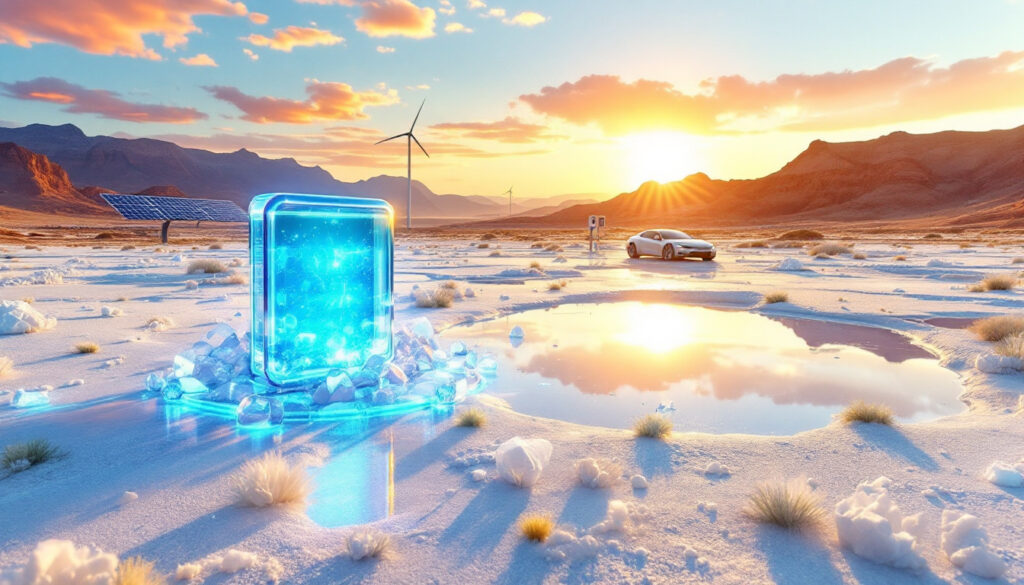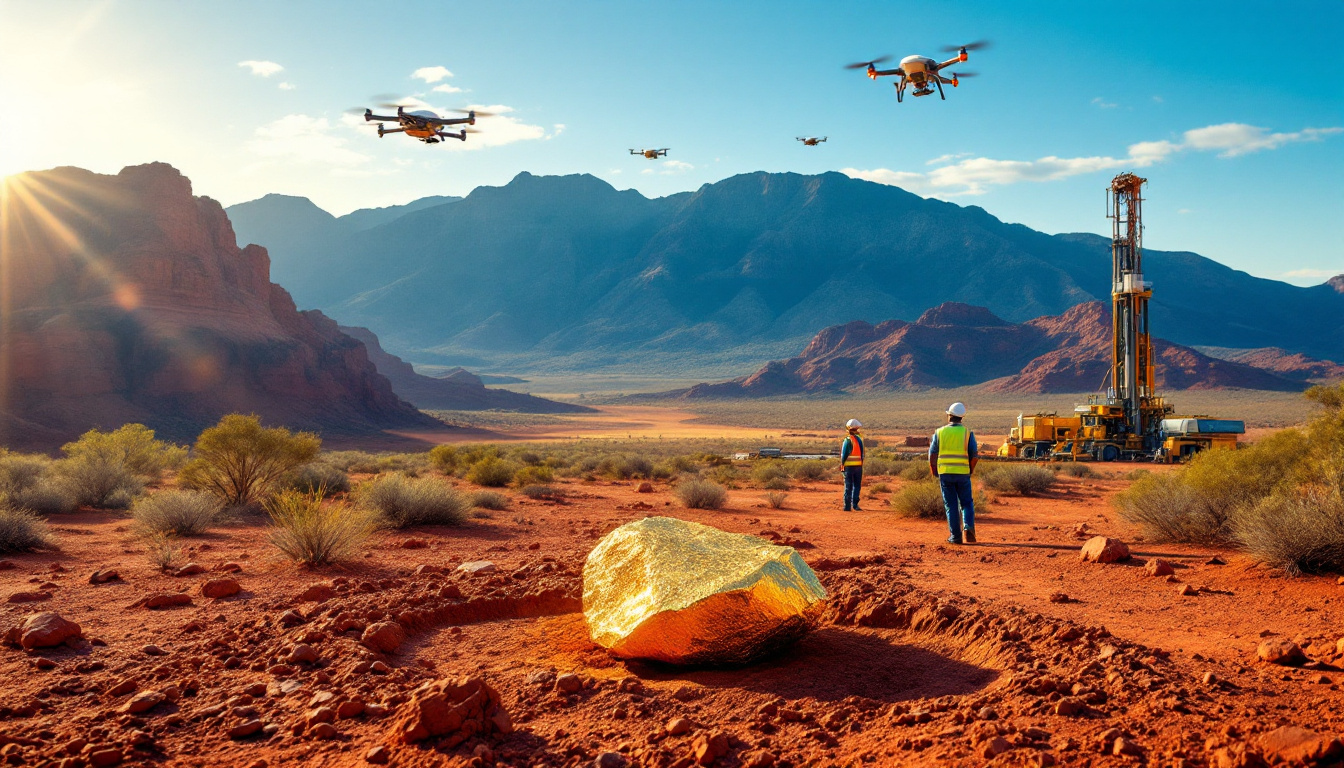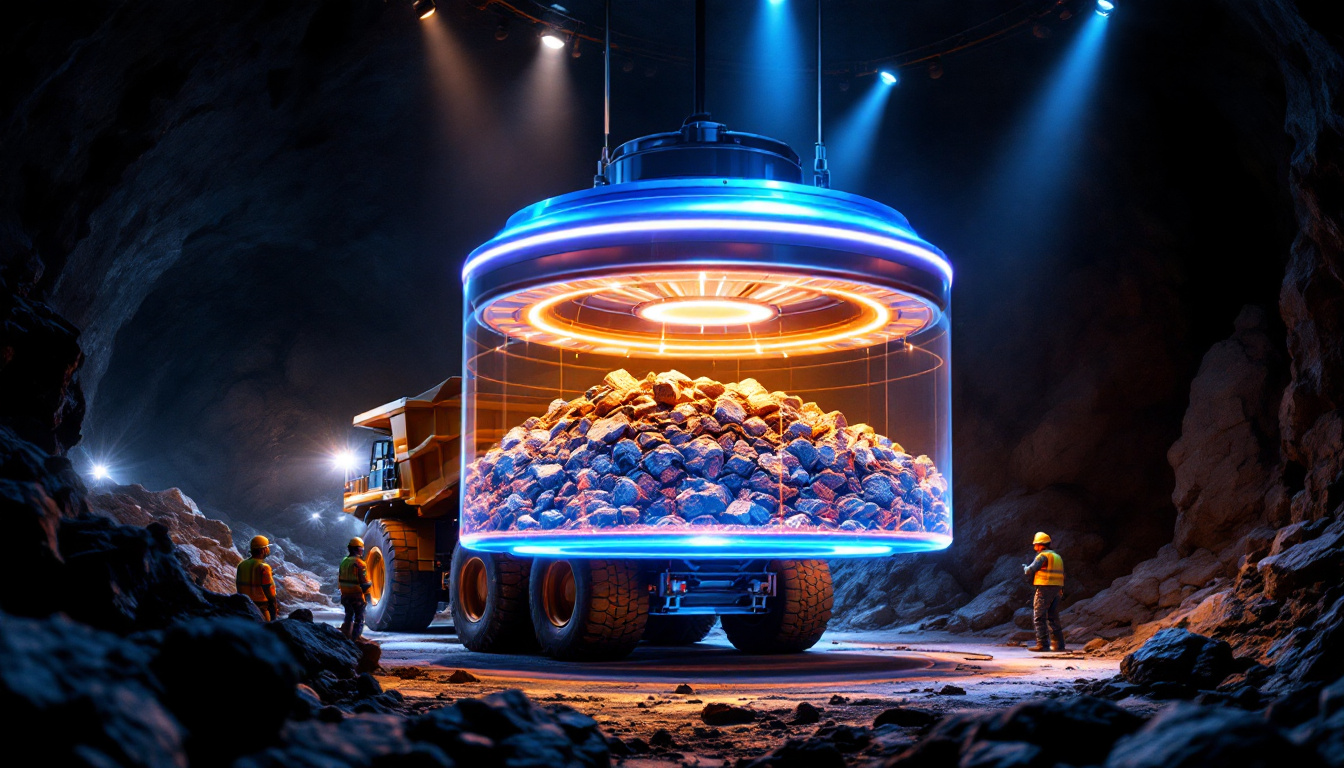What is India's Strategy for Securing Lithium Supply in Australia?
India has embarked on an ambitious strategy to secure critical lithium resources in Australia, driven by its rapidly growing economy and escalating energy transition needs. The country's approach centers on strategic investments in established lithium projects through state-backed consortiums, targeting high-quality assets with near-term production potential.
At the core of this strategy is a focus on Western Australia's lithium-rich regions, where indian state firms seek stake in sqm's lithium projects in australia rather than pursuing outright acquisitions. This approach balances investment efficiency with risk management while establishing India as a significant player in the global battery minerals supply chain.
Energy security experts note that India's Australian lithium strategy represents a sophisticated evolution from its previous resource diplomacy efforts, with Western Australia selected specifically for its stable regulatory environment and world-class lithium deposits with favorable spodumene concentrations exceeding 1.5% Li₂O in key targets.
"India recognizes that Australian lithium assets offer not just resource security but also technological learning opportunities that can eventually support domestic mineral processing capabilities," explains mining analyst Vikram Singh, who specializes in Indo-Pacific resource investments.
How Much is India Investing in SQM's Australian Lithium Projects?
India is making its largest overseas lithium acquisition attempt to date, with four state-owned firms seeking a 20% stake in SQM's Australian lithium projects for approximately $600 million. This substantial investment targets two specific high-potential assets: the Mount Holland and Andover lithium projects in Western Australia.
The Mount Holland project, a joint venture between SQM and Wesfarmers, contains an estimated 189 million tonnes of lithium-bearing ore with particularly high-grade spodumene concentrations. Meanwhile, the Andover project represents an earlier-stage opportunity with significant exploration upside based on preliminary drilling results.
Industry insiders familiar with the negotiations report that the due diligence process is currently underway following an initial offer submission. The valuation metrics suggest India is paying approximately $8,500-9,000 per tonne of lithium carbonate equivalent (LCE) capacity, which falls within the mid-range of recent comparable transactions.
"This pricing reflects both the quality of SQM's Australian assets and the strategic premium India is willing to pay to secure downstream participation rights," notes resources economist Dr. Anjali Mehta. "The deal structure likely includes offtake agreements beyond the equity stake itself."
Which Indian Companies Are Involved in the SQM Lithium Deal?
The consortium pursuing SQM's lithium assets is being led by Khanij Bidesh India Ltd (KABIL), a specialized vehicle created specifically for acquiring strategic minerals overseas. KABIL itself represents a joint venture with equal one-third stakes held by National Aluminium Company, Hindustan Copper, and Mineral Exploration and Consultancy Ltd.
Supporting KABIL in this consortium are three major state energy firms with complementary expertise:
- Coal India, the world's largest coal mining corporation, contributing financial strength and mining operational experience
- Oil India, bringing project management capabilities from the energy sector and international investment experience
- ONGC Videsh, the international arm of Oil and Natural Gas Corporation, offering expertise in overseas resource acquisition and diplomatic navigation
The consortium is currently in the process of appointing a specialized mergers and acquisitions adviser with specific experience in Australian mining transactions. Sources close to the deal indicate that several international investment banks with strong Perth offices are being considered for this role.
KABIL's leadership structure places technical experts from India's minerals sector in decision-making roles rather than political appointees, signaling the government's seriousness about execution capability in overseas mineral acquisitions.
Why is India Pursuing International Lithium Resources?
As the world's fastest-growing major economy with GDP expansion consistently exceeding 6.5%, India faces intensifying energy needs alongside ambitious decarbonization targets. The government anticipates a dramatic surge in domestic lithium demand specifically for EV batteries, with projections suggesting India will require over 30,000 tonnes of lithium annually by 2030.
India's status as the world's third-largest carbon emitter makes transportation electrification critical to its climate commitments. The government has implemented policies aimed at reducing fossil fuel dependence through accelerated EV production, including the new PM E-Drive initiative which targets 30% EV penetration by 2030.
Current EV sales account for just 2.5% of India's 4.3 million cars sold in 2024, but this segment is growing at 20% annually compared to the overall car market's 5% growth. Analysts expect EV sales to double in 2025 to approximately 200,000 units as new models from Tata, Mahindra, and global manufacturers enter the market.
India's domestic lithium resources remain extremely limited despite recent discoveries in Karnataka and Jammu & Kashmir regions. Initial assessments suggest these deposits contain lower-grade lithium with challenging extraction economics compared to established international sources, necessitating overseas partnerships to secure supply.
"India's lithium strategy recognizes the reality that domestic resources cannot meet projected demand in the medium term," explains Rahul Gupta, former advisor to India's Ministry of Mines. "The focus on Australian assets represents a prioritization of near-term production potential over exploration-stage opportunities."
How Does This Deal Fit into India's Global Critical Minerals Strategy?
The SQM deal represents a cornerstone in India's broader initiative to secure overseas agreements for critical minerals. KABIL was formed specifically to acquire strategic minerals for Indian use, with a mandate covering not just lithium but also cobalt, nickel, and rare earth elements essential for energy transition technologies.
India has already demonstrated this approach through a recent exploration and development agreement signed in Argentina for five lithium blocks in the mineral-rich "Lithium Triangle" region. These blocks in Catamarca Province contain brine-based lithium resources that complement the hard-rock resources being targeted in Australia.
Active negotiations are simultaneously underway with multiple resource-rich nations including Chile and Bolivia for lithium access. Additionally, India is exploring an initial agreement with the cobalt-rich Democratic Republic of Congo, targeting assets with grades exceeding 0.5% cobalt that could support domestic battery cathode production.
The strategy employs a deliberate geographic diversification approach to minimize supply concentration risk while also building expertise across different lithium extraction technologies. This focus on revolutionizing lithium production for clean energy includes brines in Argentina, hard-rock in Australia, and potential clay deposits elsewhere, providing India with exposure to the full spectrum of lithium resources.
Dr. Sunita Narain of India's Centre for Science and Environment notes: "India's minerals strategy demonstrates remarkable foresight by securing positions across multiple geographies and geological settings, reducing both geopolitical and technical risks in future supply chains."
What is SQM's Position in the Global Lithium Market?
Sociedad Química y Minera de Chile (SQM) stands as the world's second-largest lithium producer behind only Albemarle Corporation. The company controls approximately 19% of global lithium production, deriving its output primarily from its massive Salar de Atacama operations in Chile, which benefit from exceptionally low production costs of approximately $3,500 per tonne.
In Western Australia, SQM is operating two significant lithium projects that represent the company's strategy to diversify beyond its Chilean base:
- The Mount Holland project (70:30 joint venture with Wesfarmers) is advancing toward production with a 189-million-tonne resource at 1.5% Li₂O grade and plans for a 50,000-tonne-per-year lithium hydroxide refinery
- The Andover project represents an earlier-stage exploration asset with promising initial drilling results indicating zones exceeding 1.8% Li₂O
SQM's expertise in both brine and hard-rock lithium extraction gives it particular technological significance in the lithium supply chain. The company has pioneered efficiency improvements in lithium processing that deliver battery-grade material with reduced water consumption.
Despite the significant Indian interest, SQM has issued no official response regarding the acquisition interest. Industry analysts suggest this reflects the company's standard approach to maintaining negotiating leverage rather than any fundamental objection to the partnership.
How is India's EV Market Evolving?
India's electric vehicle landscape is undergoing rapid transformation, with EV sales currently accounting for 2.5% of the country's 4.3 million cars sold in 2024. This represents approximately 107,500 electric vehicles, with growth occurring at a remarkable 20% annual rate that substantially outpaces the overall car market's 5% expansion.
Industry forecasts project EV sales will double in 2025 to reach 200,000 units, driven by several factors:
- A wave of new model launches across multiple price points, including Tata's sub-$10,000 electric models
- Production-linked incentive schemes offering manufacturers up to $3.5 billion in subsidies for domestic EV production
- Expanding charging infrastructure, with the National Highways Authority committing to stations every 50km on major routes
- Battery cost reductions from approximately $150/kWh currently toward $100/kWh by 2027
What makes India's EV transition particularly notable is the dominance of domestic manufacturers. Unlike the traditional automotive sector, where international brands hold significant market share, Indian companies like Tata Motors and Mahindra Electric account for over 70% of the current EV market.
"India's EV market is following a unique trajectory compared to other major economies," observes automotive industry consultant Priya Sharma. "The focus on affordable, compact models designed specifically for Indian conditions rather than adapted international platforms has accelerated adoption despite infrastructure challenges."
What is KABIL and Its Role in India's Mineral Strategy?
Khanij Bidesh India Ltd (KABIL) represents a specialized joint venture of three state-owned companies created with the explicit mandate to secure critical minerals from international sources. The company's name translates roughly to "Overseas Minerals India," reflecting its core mission.
KABIL's ownership structure includes equal participation from:
- National Aluminium Company (NALCO), bringing metals processing expertise
- Hindustan Copper, contributing mining operational experience
- Mineral Exploration and Consultancy Limited, offering geological assessment capabilities
Founded in 2019 with initial capital of approximately $25 million, KABIL operates under the administrative oversight of India's Ministry of Mines but maintains operational autonomy in pursuing international opportunities. Its mandate extends beyond acquisition to include development and processing of strategic minerals.
KABIL employs a distinctive approach to international negotiations, combining traditional government-to-government diplomacy with commercial deal structures that can compete effectively against private sector bidders. This hybrid model has proven particularly effective in regions where resource nationalism concerns might otherwise limit foreign access.
The organization's growing technical team includes minerals economists, mining engineers, and international trade specialists, with many recruits drawn from India's premier engineering institutions and with international experience at major mining houses.
How Does This Deal Compare to Other Global Lithium Investments?
The $600 million Indian investment for a 20% stake in SQM's Australian lithium projects represents a significant transaction in the global lithium landscape. For perspective, this values the full asset base at approximately $3 billion, placing it among the larger lithium deals of recent years though not at the same scale as Albemarle's $4.7 billion Liontown Resources acquisition attempt.
Other major players are similarly securing lithium resources globally through various structures:
- Sibanye-Stillwater recently won European Union strategic status for its lithium projects in Finland, unlocking preferential financing terms and regulatory support
- A technology startup backed by Bill Gates and Jeff Bezos is pursuing innovative lithium extraction from geothermal brines in the Democratic Republic of Congo
- Rio Tinto's Rincon lithium expansion: a game changer for clean energy is among the most significant developments in the sector
- Russia has announced plans for large-scale lithium production by 2030, targeting 50,000 tonnes of annual output from the Kolmozerskoye deposit
What distinguishes the Indian approach is its emphasis on minority stakes rather than outright acquisitions. This strategy allows India to gain supply chain access and technical knowledge while diversifying investments across multiple projects and minimizing direct operational and regulatory exposure.
"India's lithium investment model reflects a sophisticated understanding of mineral supply chain dynamics," explains mining finance specialist Rohit Kapoor. "By securing offtake rights alongside equity positions, India gains supply security with bounded capital exposure and manageable geological risk."
What Are the Potential Challenges and Opportunities of This Deal?
The SQM-India lithium partnership faces several significant hurdles before finalization, including mandatory regulatory approvals from both Indian and Australian authorities. Australia's Foreign Investment Review Board (FIRB) has intensified scrutiny of critical minerals investments, particularly those involving state-owned entities, requiring detailed national interest assessments.
Competition from other international players for limited lithium resources presents another challenge, with Chinese, Korean, and European companies all pursuing similar assets. This has created an increasingly competitive acquisition environment where speed of execution can be as important as valuation.
However, the deal presents substantial opportunities:
- Technology transfer potential allowing India to develop domestic expertise in hard-rock lithium processing
- Strengthened India-Australia economic relations that could expand into other critical minerals and renewable energy collaboration, building on Australia's critical minerals grant boosting innovation
- Strategic positioning in the battery supply chain that supports India's ambitious Manufacturing Production-Linked Incentive (PLI) scheme for advanced chemistry cells
The partnership structure must carefully navigate commodity price volatility, with lithium carbonate prices having fluctuated between $7,000 and $80,000 per tonne over the past three years. Navigating lithium market trends for 2025 will be crucial for the success of this investment, requiring sophisticated hedging strategies and flexible offtake agreements.
Environmental credentials will also prove crucial, as Western Australia's mining regulations increasingly emphasize water conservation, biodiversity protection, and community engagement. Indian partners must demonstrate commitment to these standards to secure both regulatory approval and social license to operate.
FAQs About India's Lithium Acquisition Strategy
What is driving India's push for lithium resources?
India's accelerating energy transition requires securing battery materials for its target of 30% EV adoption by 2030. With minimal domestic lithium deposits, international acquisitions represent the only viable path to supply chain security for the world's fastest-growing major economy.
How will this investment impact India's domestic EV manufacturing?
The secured lithium supply will support India's $3.5 billion Production-Linked Incentive scheme for advanced battery manufacturing. By guaranteeing material access, India can attract greater investment in domestic battery gigafactories, potentially reducing cell imports by up to 35% by 2028.
What are the geopolitical implications of India's lithium resource acquisition?
India's entry into global lithium supply chains represents a strategic counterbalance to China's current dominance in battery materials. The diversification of lithium sourcing supports Western efforts to develop supply chains independent of Chinese processing capacity.
How does this deal compare to China's lithium investments globally?
While significant, India's $600 million investment remains modest compared to China's estimated $9 billion in overseas lithium acquisitions since 2018. However, India's approach emphasizes strategic minority stakes rather than China's preference for controlling interests, potentially offering more partnership opportunities.
What timeline is expected for finalizing the SQM lithium projects stake?
Subject to regulatory approvals and final due diligence, industry sources suggest the deal could close within 6-9 months. The Mount Holland project expects first production in 2025, making timely completion of the agreement particularly important for securing early-stage supply positions, as highlighted in recent mining and finance industry predictions for 2025.
Ready to Capitalise on the Next Major Mineral Discovery?
Don't miss potentially transformative opportunities in mining and exploration. Discover why major mineral findings like those discussed in India's lithium strategy can lead to significant market returns by visiting Discovery Alert's dedicated discoveries page, where our proprietary Discovery IQ model provides real-time alerts on significant ASX mineral announcements.




